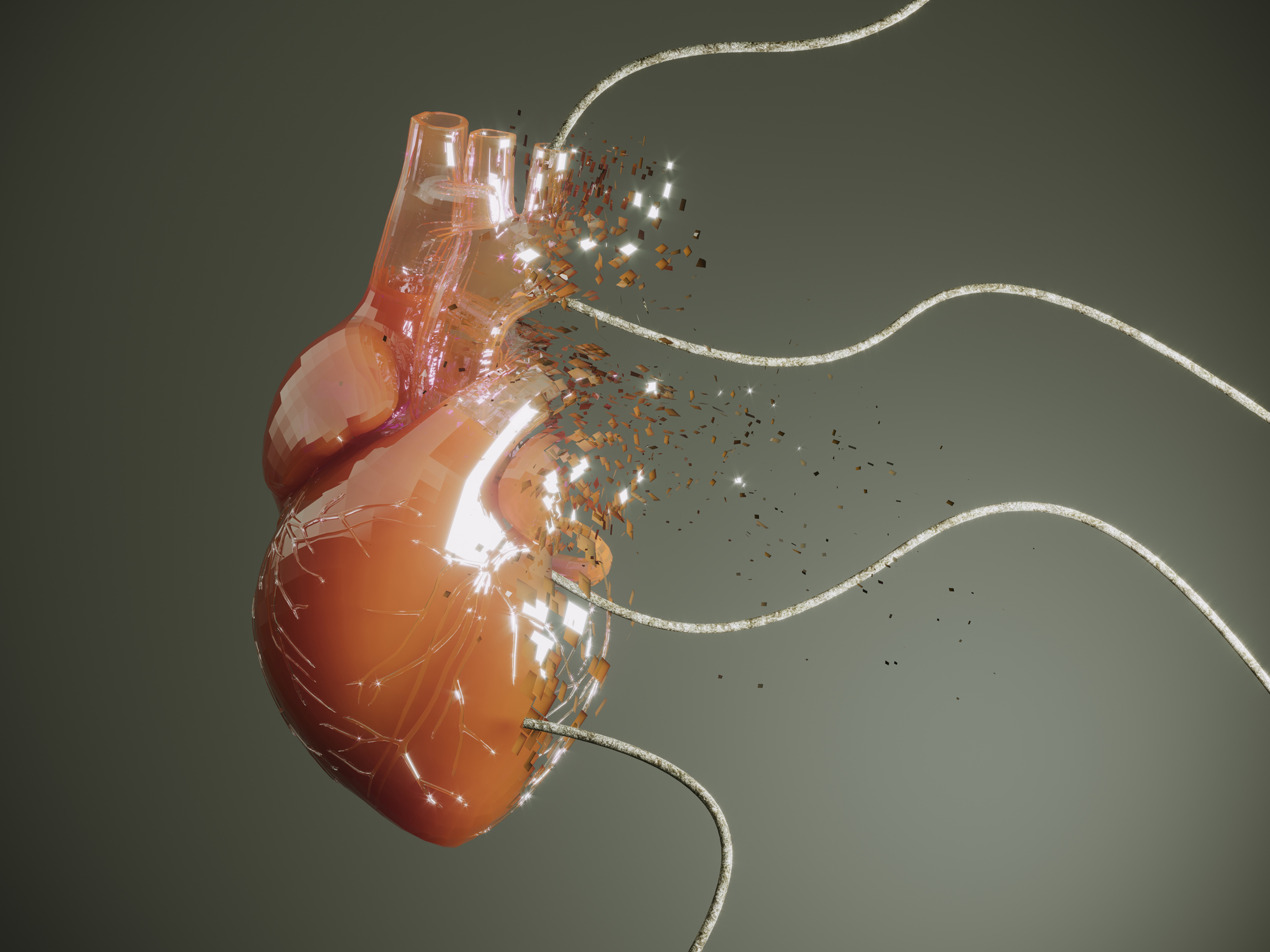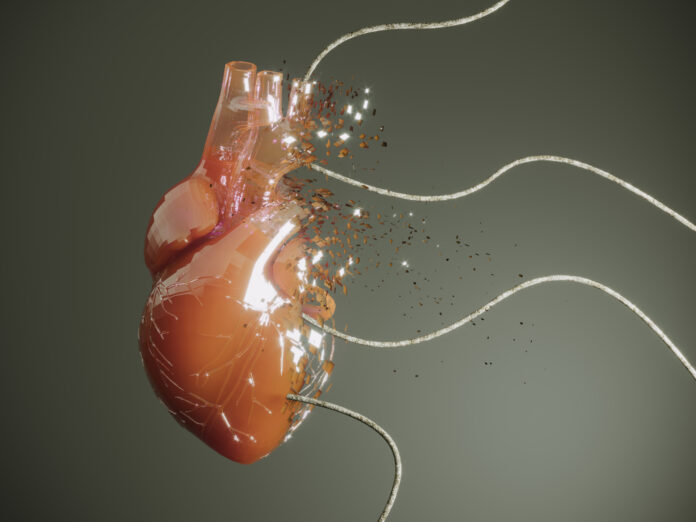
Heart Transplant Rejection Diagnostic Outperforms Biopsies

Gwen Chambers has had a lot to contend with as a patient—she’s beaten cancer twice, including stage IV Hodgkin’s lymphoma, and then twenty years later was diagnosed with heart failure and received a transplant. But nothing has been more dreadful and uncomfortable than the post-transplant heart biopsies checking for graft rejection. It’s gotten so bad that Gwen began taking anti-anxiety medication every time she had a biopsy.
Fortunately for Gwen, her doctor, Kiran Kaur Khush, MD, professor of medicine at Stanford University, was developing and testing a new, noninvasive molecular diagnostic from CareDx as part of one of the largest heart transplant studies of its kind, the Surveillance HeartCare Outcomes Registry (SHORE).
Khush and colleagues published research showing that using HeartCare, which includes two molecular tests from CareDx called AlloSure-Heart and AlloMap, is linked to fewer surgeries, better survival, and a low rate of graft dysfunction over time. AlloSure-Heart checks for donor-derived cell-free DNA (dd-cfDNA) in the recipient’s blood to see if there is graft injury and acute cellular rejection (ACR). AlloMap, on the other hand, looks at gene expression profiles to see if the immune system is activated and if antibodies cause rejection.
“We worked with CareDx to translate some of the discoveries we’ve made in the lab to an actual clinical use test—that’s ultimately why we do our work,” Khush told Inside Precision Medicine. “Our research is to develop a technology that will benefit patients, but so often, the road to doing that is so long, drawn out, and complex. “Having the team at CARE DX that’s experienced with refining an assay to be a streamlined and cost-effective clinically available assay within a couple of years and then disseminated around the country has been pretty remarkable.”
Pour out your heart
For many of the past few decades, the standard protocol for centers around the country, including Stanford, has been to routinely perform 15 to 20 heart biopsies to screen for graft rejection over the first few years after a heart transplant.
These biopsies aren’t just emotionally scarring—they’re physically scarring, too. The heart samples tend to come from the same spot, so after a while, they end up being scar tissue from previous procedures. These samples aren’t particularly useful as indicators of graft rejection, nor are they representative of the health of the entire heart. What’s more, these invasive procedures can also cause damage and even carry a small risk of perforating the heart.
According to Khush, “We get three tiny pieces of tissue from the right ventricle of the heart—literally like a millimeter piece of tissue—and then the pathologist stains it and looks at it under the microscope for the presence of white blood cells infiltrating the graft and dead cells as a marker of graft injury. We’re collecting such a tiny piece of tissue from the heart, and acute rejection is not completely homogeneous throughout the heart. It may be patchy. You may happen to biopsy part of the heart that looks relatively normal and completely miss the part that had the rejection.”
All of these reasons—the impact on patients and variability in sampling and analysis—have led Khush to pursue developments in noninvasive, comprehensive molecular testing methods for detecting graft rejection.
“We did that to try to pick up rejection early because by the time patients developed symptoms or presented clinically with acute rejection, it was often quite late to the rejection process, and they would be sick, develop graft failure, and have very poor outcomes after transplant,” said Khush. “So, routine surveillance for acute rejection has been the backbone of how we care for our post-transplant patients.”
More recently, the field of cardiac transplantation has been searching for noninvasive ways to screen for graft rejection, resulting in many proposed biomarkers. However, it wasn’t easy to incorporate these tools individually into heart transplant center protocols because it can be difficult to conduct a clinical trial with enough heart transplant patients to conduct this kind of testing.
“If you go back to 2010, there was a big randomized control trial of gene expression profiling versus biopsies for surveillance after heart transplant, and at that time, this was the first clinically available noninvasive assay to screen for rejections,” said Khush. “It was a very new concept, and patients were nervous about not undergoing biopsies. “It took a randomized control trial to convince people that it is safe to use noninvasive surveillance for acute rejection and that the transplant outcomes aren’t any worse—patients aren’t dying because they’re not having biopsies for surveillance.”
By the mid-2010s, testing began using dd-cfDNA for heart transplant surveillance, and around 2018, it was adopted in many clinical centers—over 90% of heart transplant centers use AlloSure-Heart, according to Khush.
“I’ve seen a remarkable and rapid transition from a research concept to a test that’s available for clinical use,” said Khush. “It was less than 10 years ago when we first developed the idea of dd-cfDNA as a marker of rejection. By 2018, this test was available for clinical use.”
Khush, who had been interested in looking at dd-cfDNA, began to wonder if AlloSure-Heart and AlloMap could work to complement one another or if one of the two tests was sufficient. This inquiry led to the design and implementation of one of the largest clinical research studies ever done in heart transplantation, SHORE. About 3,500 heart transplants are done annually in the US, and SHORE, which involved 67 transplant centers around the US, enrolled about 2,700 heart transplant recipients who had been tested with AlloSure-Heart, AlloMap, or both, as well as biopsies per the institutional protocol.
Khush’s analysis demonstrated that the clinical outcomes for patients positive for both molecular tests up to two years after transplant are most likely to have graft rejection and have worse clinical outcomes compared to any other group. So, dual molecular testing worked better than either molecular test alone at finding graft rejection. This supports the idea that the two tests work together and proves that combination molecular testing is a good way to find graft rejection. Furthermore, dual testing allows a more nuanced and precise approach to patient selection for surveillance biopsies.
“One thing we’ve learned over the years is that these noninvasive tests are more sensitive than the biopsy for detecting rejection, especially in its very early stages—weeks to months before you see rejection on the biopsy,” said Khush. “So, the field has shifted from biopsies to doing more noninvasive tests because they’re an earlier and more sensitive window into the state of the immune response and the development of graft injury.”
As a bonus, Khush and colleagues found that the heart transplant field is moving towards non-invasive testing. They showed that transplant centers were performing fewer and fewer biopsies as they became more comfortable with relying on non-invasive assays.
“The number of biopsies performed around the country has gone down dramatically, but importantly, that has not impacted patient outcomes at all,” said Khush. “Even though we’re not doing all these heart biopsies, our patients are still doing well. There’s still greater than 90% one-year survival. So, it’s a safe approach for patient monitoring that potentially has advantages above and beyond doing biopsies.”
Enabling personalized immunosuppression protocols
Khush thinks these studies are just the tip of the iceberg for understanding and stratifying patients to tailor suitable immunosuppression regimens. For example, acute rejection is still an issue. Still, it mainly occurs within the first year or two after transplant, and beyond that, doctors rarely see acute rejection if patients are adhering to their medication regimen, according to Khush. The long-term problems that heart transplant recipients face are the side effects of immunosuppression: developing infections, cancers, chronic kidney disease, and other complications resulting from the toxicity of immunosuppression drugs. With these molecular diagnostic markers, Khush believes that transplant medicine can become personalized, tailoring the immunosuppressant dosages to each patient.
“The way we practice transplant medicine is very protocol-driven—at this many months post-transplant, we reduce this drug, and at these many months, we make this change the immunosuppression,” said Khush. “It’s treating all of our patients the same way when we know that patients are so different by sex, age, or race. For some patients, they’re over-immunosuppressed, and they have infections and cancers; for others, they’re under-immunosuppressed, and they develop rejection.”
Khush, who has patients from all over California and even Alaska, believes these molecular tests are critical for achieving health equity and can reduce some of the burdens of follow-up, including economic disparities.
“We have patients from Hawaii—they’ve got to take time off work and pay for travel, and paying for a hotel in Palo Alto is expensive,” said Khush. “It’s a big deal for them to come in for these types of surveillance procedures when the likelihood of finding rejection on a surveillance biopsy is low. If we could have them go to a local lab in whatever city they live in, get a blood draw, and do surveillance, they wouldn’t have to take time off work or travel. However, we could still safely keep close tabs on these patients and do regular surveillance, no matter where they are. It expands access to good transplant care for our patients and removes some barriers to caring for them.”
Biopsies are also riddled with issues that limit testing frequency, not just because of their invasive nature but also because it is difficult for patients to travel. With HeartCare, doctors can reach almost any patient and test them as often as they see fit.
“We could check them every week or two while we’re adjusting their immunosuppression to find that right balance so that we’re immunosuppressing them just enough to prevent rejection of their graft, but we’re trying not to immunosuppress them too much so they “develop all these long-term complications,” said Khush. “I hope that ultimately, the longer-term outcomes after transplant will be better with these more personalized approaches to therapy using noninvasive surveillance.”

Ethel Purdy – Medical Blogger & Pharmacist
Bridging the world of wellness and science, Ethel Purdy is a professional voice in healthcare with a passion for sharing knowledge. At 36, she stands at the confluence of medical expertise and the written word, holding a pharmacy degree acquired under the rigorous education systems of Germany and Estonia.
Her pursuit of medicine was fueled by a desire to understand the intricacies of human health and to contribute to the community’s understanding of it. Transitioning seamlessly into the realm of blogging, Ethel has found a platform to demystify complex medical concepts for the everyday reader.
Ethel’s commitment to the world of medicine extends beyond her professional life into a personal commitment to health and wellness. Her hobbies reflect this dedication, often involving research on the latest medical advances, participating in wellness communities, and exploring the vast and varied dimensions of health.
Join Ethel as she distills her pharmaceutical knowledge into accessible wisdom, fostering an environment where science meets lifestyle and everyone is invited to learn. Whether you’re looking for insights into the latest health trends or trustworthy medical advice, Ethel’s blog is your gateway to the nexus of healthcare and daily living.



